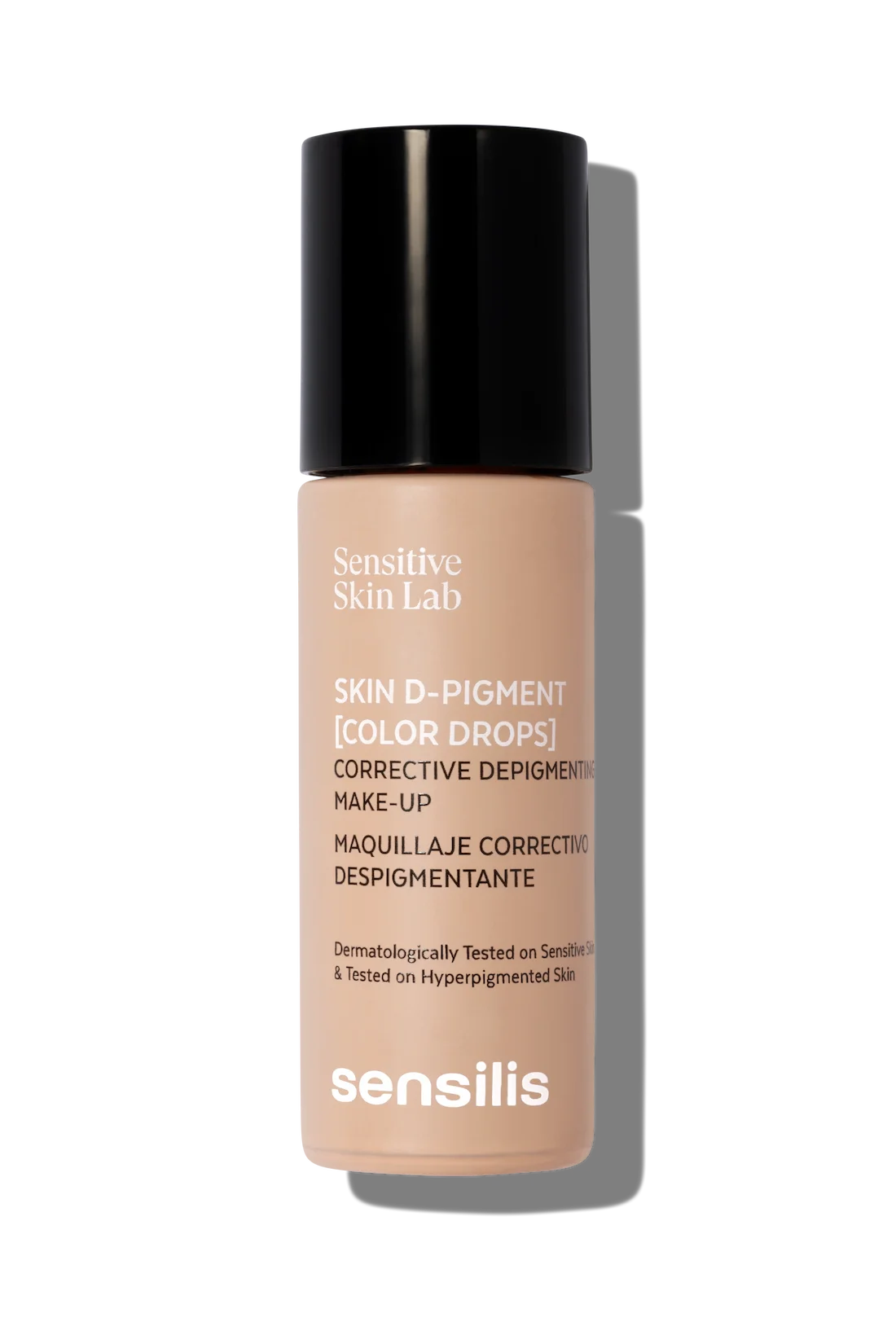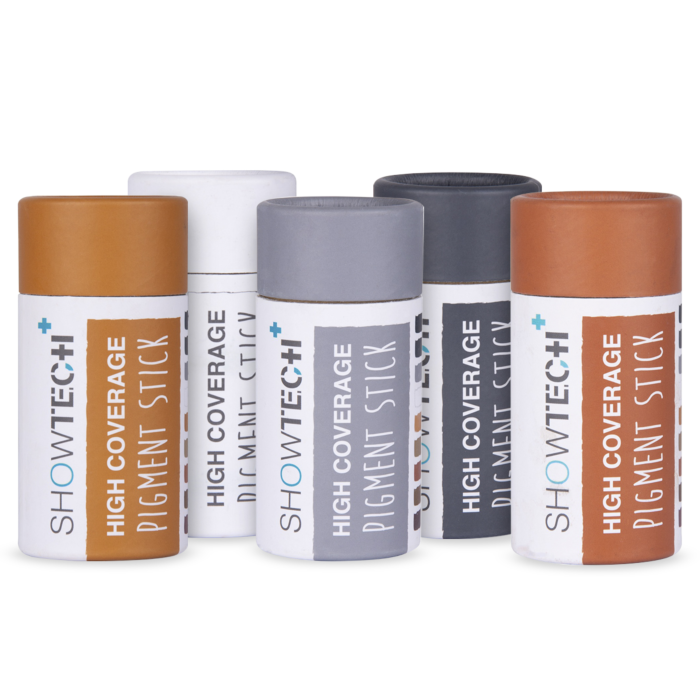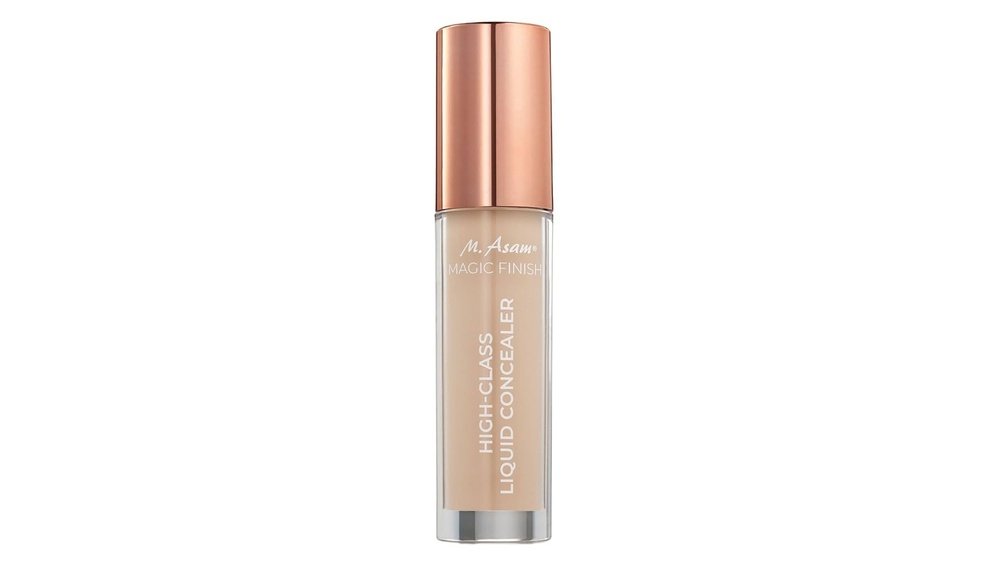Have you ever wondered why some pigments cover imperfections so effortlessly while others barely make a difference? Understanding what makes pigment high coverage can change the way you choose your makeup or art supplies.
When you know the secret behind that rich, flawless finish, you’ll feel confident in your choice every time. Keep reading, and you’ll discover exactly what gives these pigments their power to hide, enhance, and transform. Your next flawless look or masterpiece is just a few insights away.

Credit: sensilis.com
Role Of Pigment Density
Pigment density is a key factor in creating high coverage makeup products. It affects how well the product hides skin imperfections. The higher the pigment density, the better the coverage.
Dense pigments block the skin’s natural color more effectively. This makes the product look solid and even on the skin. It helps cover redness, dark spots, and blemishes with fewer layers.
What Is Pigment Density?
Pigment density means the amount of pigment packed into a product. More pigment means higher density. This density controls the product’s opacity and color strength.
High pigment density means less product is needed to cover the skin. It also means the product looks richer and more vibrant.
How Pigment Density Affects Coverage
Higher pigment density creates a thicker layer on the skin. This layer hides skin flaws better. Low pigment density results in a sheer, transparent finish.
With dense pigments, fewer layers are needed for full coverage. This saves time and prevents a heavy, cakey look.
Benefits Of High Pigment Density In Makeup
High pigment density provides strong, even coverage. It helps products last longer without fading. It also allows for true color payoff, matching skin tone well.
Products with high pigment density feel smooth and rich. They give a natural look despite the strong coverage.

Credit: www.amazon.com
Types Of High Coverage Pigments
High coverage pigments come in various types. Each type serves a different purpose and suits different skin types and preferences. Knowing these types helps you pick the right pigment for your makeup or art needs.
Powder Pigments
Powder pigments are dry and finely ground. They offer strong color payoff and blend easily. These pigments work well in eyeshadows and face powders. They provide buildable coverage and a matte finish.
Liquid Pigments
Liquid pigments have a smooth, fluid texture. They spread evenly on the skin and dry quickly. These pigments often appear in foundations and concealers. They give full coverage and a natural look.
Cream Pigments
Cream pigments are thick and creamy. They are easy to apply and blend with fingers or brushes. These pigments suit dry or mature skin well. They provide rich color and a dewy finish.
Gel Pigments
Gel pigments have a lightweight, jelly-like texture. They feel comfortable on the skin and stay put for hours. These pigments work great for eyes and lips. They offer vivid color and shine.
Pressed Pigments
Pressed pigments are compressed powders. They are easy to carry and use. These pigments are popular in eyeshadow palettes. They deliver intense color with minimal fallout.
Formulation Ingredients That Enhance Coverage
Formulation ingredients play a key role in making pigment high coverage. These ingredients help pigments stick well to the skin. They also make colors appear more bright and dense. The right mix of ingredients creates a smooth, even finish. This helps cover blemishes and uneven tones effectively.
Understanding these ingredients helps you choose better products. It also explains why some pigments perform better than others. Below are the main formulation ingredients that boost pigment coverage.
Pigment Concentrates
Pigment concentrates are the main source of color. They contain tiny particles of color that provide strong coverage. The higher the concentration, the more vivid and dense the color looks. These concentrates are finely ground to spread evenly on the skin. This avoids patchiness and dull spots.
Binders And Film Formers
Binders hold pigment particles together and attach them to the skin. Film formers create a thin layer that locks the color in place. These ingredients prevent pigment from rubbing off or fading quickly. They also help pigments stay smooth and not cake up on the skin.
Emollients
Emollients add moisture and softness to the pigment formula. They help pigments glide on smoothly without clumping. This makes coverage appear more natural and full. Emollients also improve skin feel, making makeup comfortable to wear all day.
Fillers And Opacifiers
Fillers give pigments extra bulk and thickness. They fill in tiny skin gaps and pores for an even surface. Opacifiers block light from passing through, boosting color density. These ingredients increase the opacity of pigments, hiding flaws better.
Stabilizers And Preservatives
Stabilizers keep pigments from breaking down or changing color. Preservatives stop bacteria growth and extend shelf life. Both help maintain pigment quality and coverage over time. Stable pigments perform consistently and look fresh longer.

Credit: christiesdirect.com
Application Techniques For Maximum Effect
Applying pigment with high coverage requires the right techniques to get the best look. Using proper methods helps the color stay bold and last longer. It also makes sure the skin looks smooth and even. Small changes in how you apply pigment can change the final result a lot.
Preparation Is Key
Start with clean and dry skin. This helps pigment stick better. Use a gentle cleanser and pat the skin dry. Apply a light moisturizer if the skin feels dry. Avoid heavy creams that can block pigment.
Use The Right Tools
Choose brushes or sponges made for high coverage. A dense brush packs pigment well. A damp sponge blends the pigment without removing it. Each tool gives a different finish, so pick what suits you.
Apply In Thin Layers
Put pigment on in thin layers. This avoids a thick, cakey look. Build coverage slowly by adding more layers. Let each layer dry before applying the next one.
Patting Instead Of Rubbing
Pat pigment gently onto the skin. Rubbing can remove or smear it. Patting helps the pigment stay in place. It also keeps the skin texture smooth.
Set With Powder
Use a translucent powder to set the pigment. Lightly dust the powder to lock color. This prevents smudging and extends wear time. Avoid heavy powder that hides the pigment.
Common Mistakes To Avoid
Using pigment high coverage products can be tricky. Many people make mistakes that reduce their effect. Avoiding these errors helps get smooth, flawless skin. Here are common mistakes to watch out for.
Applying Too Much Product
Thick layers do not mean better coverage. Too much pigment creates a cakey, heavy look. It can also crack or peel during the day. Use small amounts and build coverage slowly.
Skipping Skin Preparation
Clean, moisturized skin helps pigment stick better. Skipping primer or moisturizer leads to uneven patches. Always prepare your skin to make the pigment last longer.
Not Blending Properly
Harsh edges ruin a natural look. Blending is key for smooth, even coverage. Use brushes or sponges to soften lines and spread pigment well.
Ignoring Skin Type
Different skin types need different products. Oily skin may need mattifying formulas. Dry skin needs hydrating pigments. Choose the right product for your skin type.
Using The Wrong Shade
Shade matching is essential. Too light or too dark pigment looks unnatural. Test shades in daylight to find the best match for your skin.
Choosing The Right Pigment For Your Skin
Choosing the right pigment for your skin is key to high coverage makeup. The right pigment matches your skin tone well. It blends smoothly and looks natural. Picking the right shade hides imperfections without looking heavy. It helps your skin glow and feel confident.
Different skin tones need different pigment shades. Warm skin tones suit golden or yellow pigments. Cool skin tones match pink or red pigments. Neutral skin tones work well with balanced pigments. Knowing your skin undertone guides your pigment choice.
Identify Your Skin Undertone
Skin undertone is the color beneath your skin’s surface. It can be warm, cool, or neutral. Look at your veins in natural light. Blue or purple veins mean cool undertone. Green veins show warm undertone. Mixed colors suggest a neutral undertone.
Test Pigments On Your Jawline
Try pigment shades on your jawline. This area shows your real skin color. Pick a few shades close to your tone. Blend them gently and wait a few minutes. The shade that disappears into your skin is the right match.
Consider Your Skin Type
Dry skin needs creamy, moisturizing pigments. Oily skin prefers matte, oil-free pigments. Combination skin benefits from balanced formulas. Choose pigments that suit your skin’s needs for better wear.
Think About Coverage Level
High coverage pigments are thick and dense. They cover scars and dark spots well. Light coverage pigments are thinner and sheer. Pick coverage based on your skin’s condition. Full coverage is great for uneven skin.
Frequently Asked Questions
What Defines Pigment High Coverage In Cosmetics?
Pigment high coverage means the product provides intense color with minimal application. It hides imperfections effectively and offers a smooth, even finish.
How Does Pigment Concentration Affect Coverage Quality?
Higher pigment concentration results in richer color and better opacity. It ensures fewer layers are needed for full coverage and lasting wear.
Which Ingredients Enhance Pigment High Coverage?
Ingredients like titanium dioxide and iron oxides boost opacity. They help pigments adhere well to skin, improving coverage and durability.
Can High Coverage Pigments Suit All Skin Types?
Yes, but formulas vary. Some pigments are designed for oily, dry, or sensitive skin to ensure even application and comfort.
Conclusion
Pigment high coverage depends on the amount and quality of pigment used. It hides imperfections well and gives a smooth finish. The formula needs to be thick but easy to blend. Strong color payoff matters for bold and lasting looks.
Good coverage also means less product needed. Choosing the right pigment helps achieve the desired effect. This balance makes high coverage pigments popular in makeup. Clear skin appearance is the main goal. Simple ingredients that work well together create the best results.
 Skip to content
Skip to content 